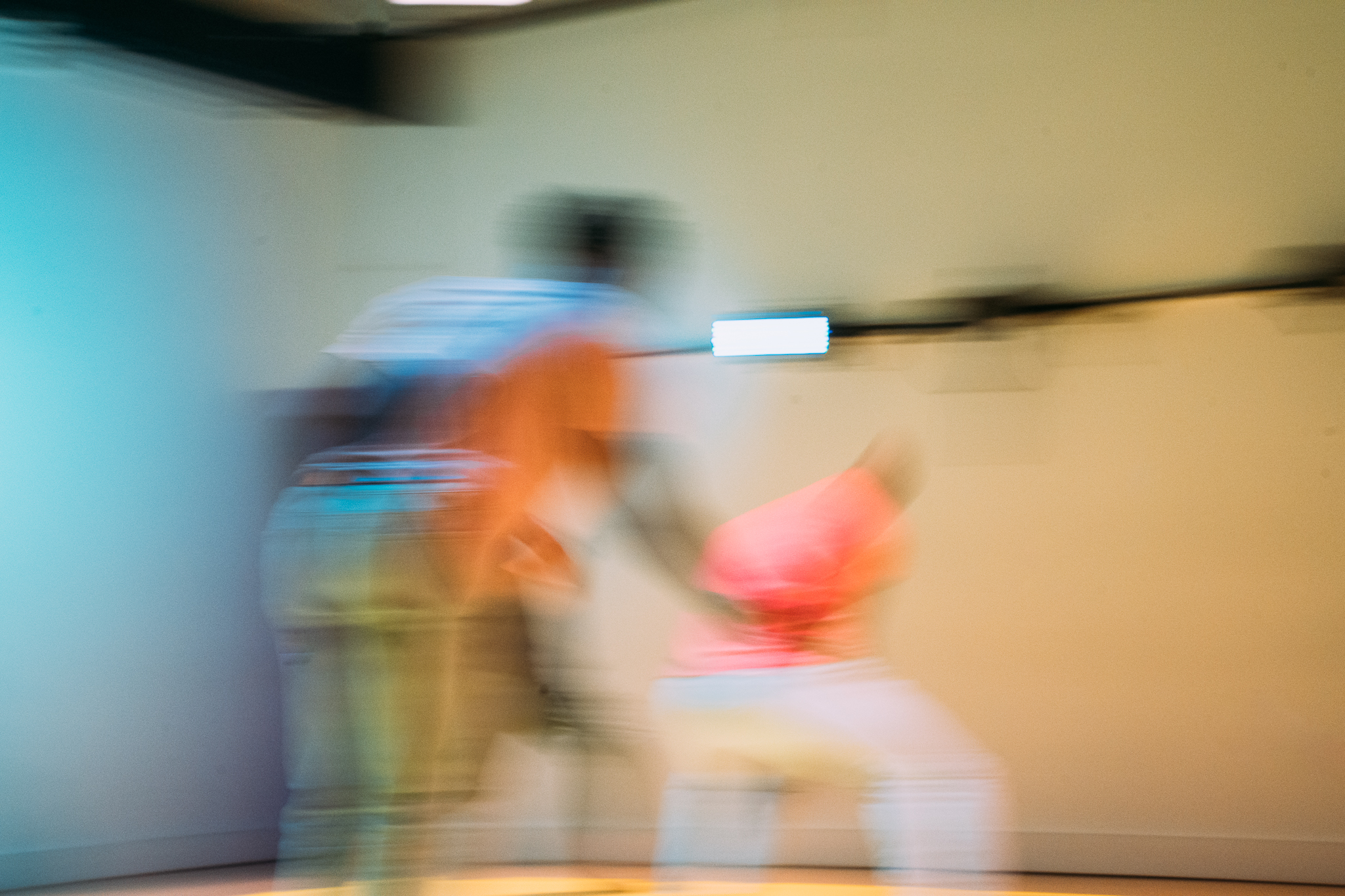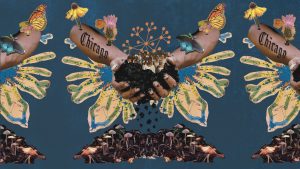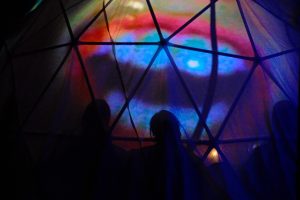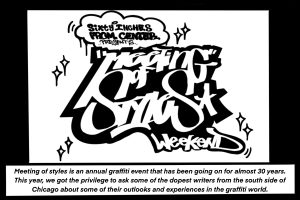Everything is simple: silver and gold flings into the air and the coins come crashing back down to the yellow Marley floor; five men cluster around in an array of stability and instability. I am entrenched with wonder and giggle-laden awe as I watch on, chewing on a hot cinnamon stick of gum, anticipating more confrontation and, even more chaotic, certainty. J’Sun Howard’s carefully assembled dream team of male dancers journey in and out of the floor, unwavering bouts of body-to-body contact, not fleeting. The men of color find their rhythm in rapid succession as the lighting changes from a wash over the whole room to a dim whisper over the performance floor.
It’s a comfort—a small chagrined comfort—to live in a moment as if capitalism is something you can hold in your hands, hold in your too small hands, and crush between bloodied fingers. It’s both jarring and pleasing to watch Alain and Solomon hoist, respectively, Daiki and Timothy over their shoulders only to ground themselves with their feet planted flatly, weight shifting forward and backward, their spines undulating. Daiki and Timothy eventually crash to the floor in gentle heaps of fetal curves. Solomon takes center stage as a driving force, pushing himself up into the air and grounding himself into the floor. While the urgency and tenacity are palpable just from the spontaneous unison and choreography, the contact improvisation taking place throughout allows trust to enter the room. Though these dancers have been working with each other for a short period of time—from Kobe, Japan to Chicago in studios and via Zoom—comfort and trust are no strangers to sharing space on this warm September evening.
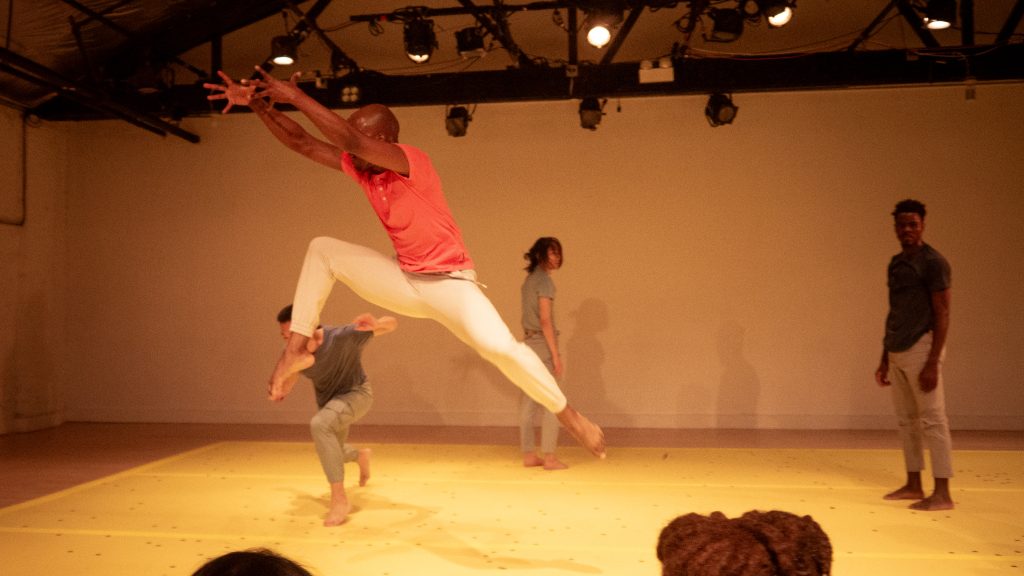
The room falls silent towards the midpoint with the sound of heavy breaths and jingling pockets. Each man wears a solid-colored shirt with khaki slacks, as danceable as Adidas track pants. One of Beyonce’s more obscure tracks murmurs breathlessly into the silence: “I try to get all up in your mind, It stops at a crime that I wanna make you mine…” And the room shifts.
Choreography seeps into the dreamscape J’Sun has crafted. The dancers face the upstage left corner and they utilize the length of their limbs to their advantage. Their bodies motion forward and backward in a hypnotic sequence as they carve out shapes with their spines, fingers, and toes//pelvises and hips undercurve so they glide across the floor without their feet lifting from its surface. This is collective struggle: movements aren’t made and maintained by an individual or “messiah,” but by collective power and mobilization. There’s a negotiation and “figuring out” after the collective decision is made to move through or towards the destruction of suppression. When the improvisational games return, some of those who were soft and nebulous in their movements before become more direct and sharp in their execution; Daiki is no longer docile, Alain no longer moves from one side of the floor to the other at the drop of a dime, Damon is no longer in the shadows.
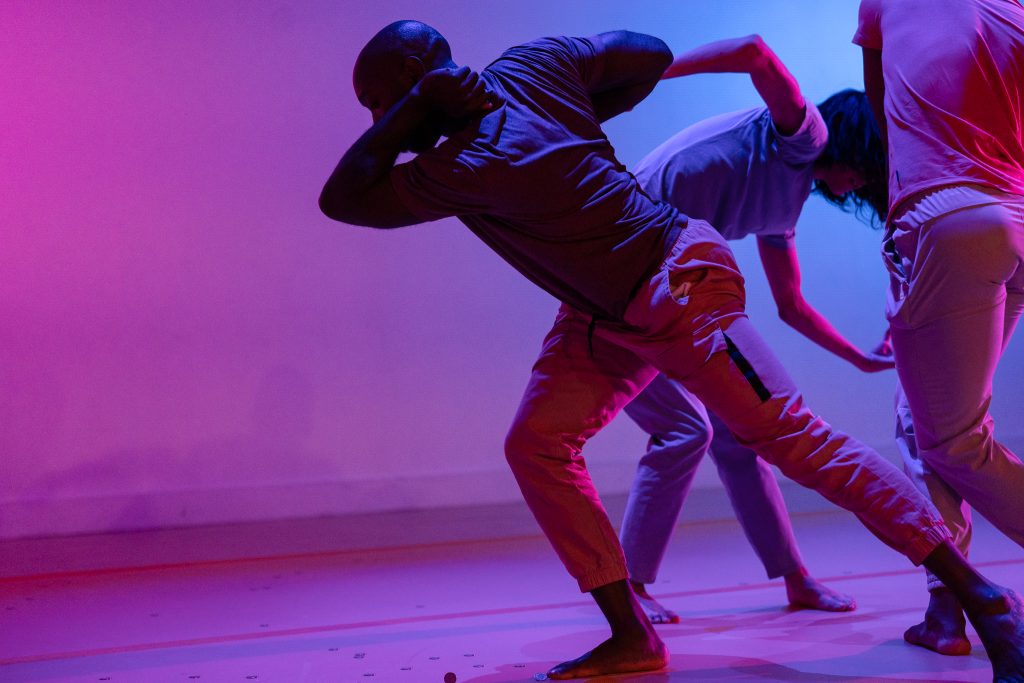
When Damon Green comes forward displaying Vogue elements, the air is nonchalant, but heavy with tension. His emergence answers the question, “What are we dancing for right now?” This moment solidified my curiosities up until this point on where we were coming from and where we were going. As the other men continue to grab at each other or spiral up and down and down and back up again, Damon catwalks through the organized chaos and becomes the epicenter of Howard’s entire premise. Here he was, serving hand performance on a deep mahogany serving tray. Later on, during the post-show talk, I am reminded of this moment when J’Sun defines Black Fugitivity, “[it] explores how Black folks navigate systems that resist their existence by actively participating in acts of escape and striving for autonomy and freedom.” Now, when you read the word “escape,” don’t get it confused with the act of seeking escapism or avoiding reality. Quite the contrary.
Black fugitivity demands we understand and acknowledge the exact position of being the slave at the subjugation of the empire (read: international superpowers such as the U.S. or the UK.) With this acknowledgment and understanding, we are then tasked with strategizing our collective mobilization to break ourselves away from the cage. Righteous Beauty makes me consider recent acts of fugitive jubilance following the murder of O’Shea Sibley as countless folks from Black queer communities across the US gathered at gas stations to vogue and walk in his honor. Though his Death was brought on by the hands of a fellow civilian, the ideology of the murderer should remind us of the overarching culture and systems that justify killing and discarding those of us who do not subscribe to cisheteronormative hegemony. But what of those of us who actively seek to destroy this hegemony? Not just in non-violent acts like gathering to dance and raise our voices at murder sites and burial grounds, but also those of us who take up arms. What is necessary for true escape from the empire? And when I say “true escape” I mean material change in which the systems that promote our homicidal subordination and genocidal erasure are rendered obsolete. We can look closer at the body-to-body contact (re: combat) between Alain/Daiki and Solomon/Timothy.
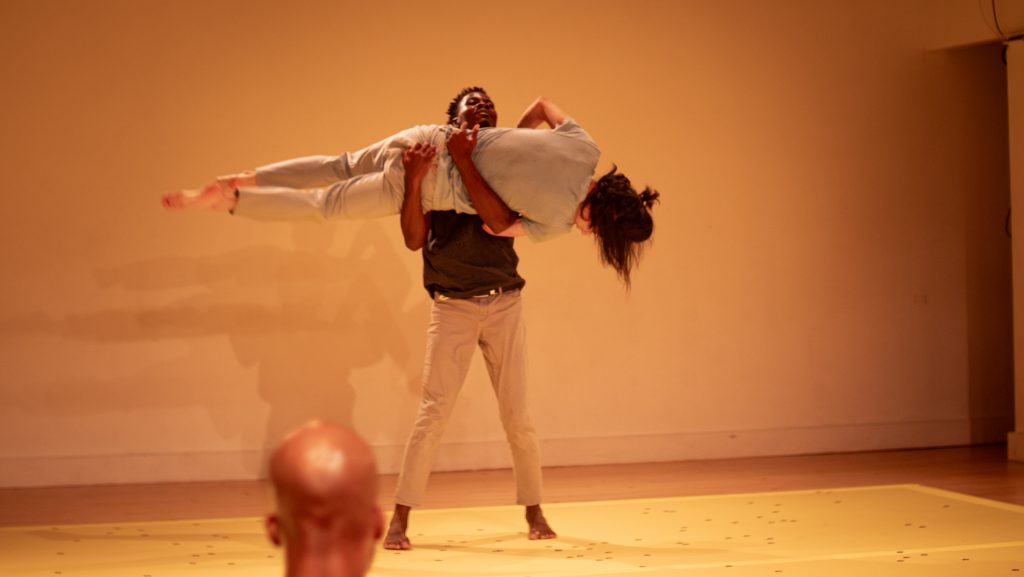
See the archives and explain the difference between the militant abolitionists pre-Civil War (before 1861) who burned down plantation houses and the white families within them and the freedom fighters of Palestine who clash with military-grade tanks and destroy soldiers of the Israeli occupation forces within them.
Remembering the coins flying in the air only to come down with no fountain to catch them… I am also remembering the overproduction and hyper consumption that has plundered Congo’s natural resources, displaced their indigenous, and enslaved the elders and youth alike. Thinking about the flow and change of Daiki’s movement qualities, I am reminded of the slow-turning tide of the cleansing and displacement in Darfur, Sudan as the engineering corps claim to be closer to liberating communities near Omdurman alongside the Sudan armed forces who’ve consistently neglected (and decimated) the greater population. With the back and forth between Solomon & Timothy I am wondering about sustainability in our movement(s). “Where do we go from here?” always ends up being the question when the world (re: the ruling class) is faced with a reckoning. How much of our “progress” is just smoke and mirrors?
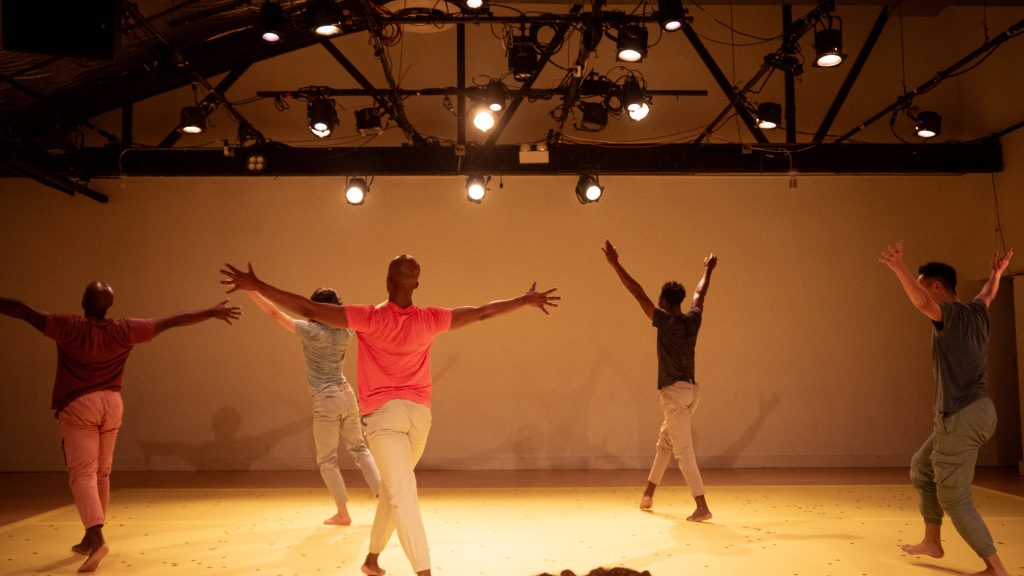
Liberation struggle will always be present, not fleeting nor idle, so long as the powers that be remain out of touch and offer empty platitudes to satiate the easily appeased. Oppressed peoples of the world will stand in solidarity, in organized crowds of fuck wit and get right. Our struggles are ongoing. The empires’ responses are forever shifting. No one’s coming to save us, but we move.
So by the end, Alain’s red shirt is now ripped down the back and side and a bright, high-cheeked smile shines on his face with teeth exposed. He looks out at us with this infectious glee. I grin back as I pop the gum in my mouth that has long lost its taste, but I am much satisfied in the candor.
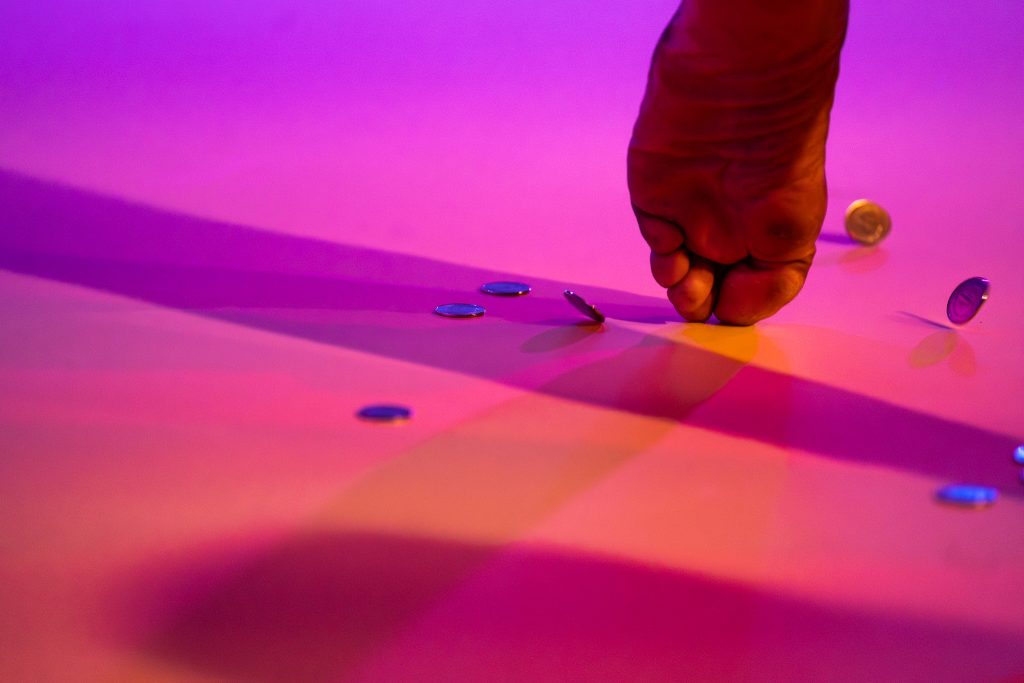
The Righteous Beauty of the Things Never Accounted For by J’Sun Howard was performed on September 29th and 30th, 2023 at Links Hall in Chicago.
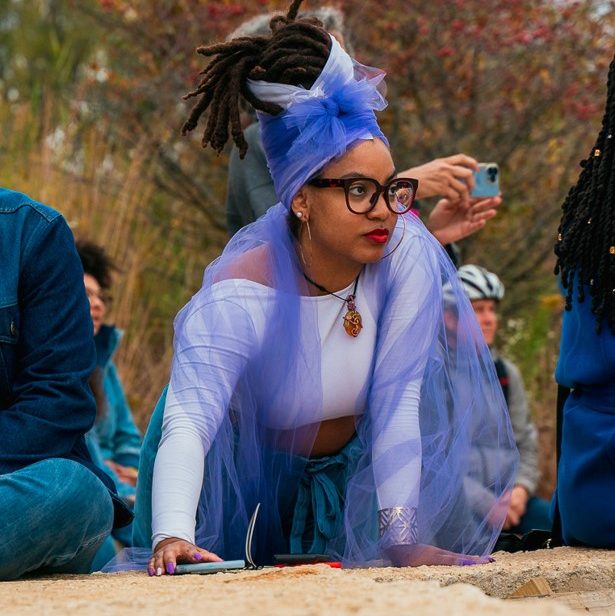
About the author: Born in Ruston, Louisiana and raised across Louisiana, Maryland, and Texas, Aaliyah Christina creates and supports performance work as an administrator, curator, movement artist, and writer. She makes dances and writes poetic stories about relationship/power dynamics, mental health, and Blackness as a resident on the South side of Chicago. She works as the Artist Programs Manager & Associate Curator at Links Hall, co-organizes with Performance Response Journal (PRJ), and collaborates with community organizations and fellow artists across the city of Chicago. Since 2015, she has collaborated with Chicago artists like Keyierra Collins, Ysayë Alma, Darling Shear, Wisdom Baty, Ayako Kato, and Dorian Sylvain to name a few. In 2021, Aaliyah received the 3Arts Make-A-Wave grant and as of 2023, she received the Illinois Arts Council Agency 2023 Artist Fellowship Finalist Award. In 2024, she was selected as a Chicago Dancemakers Forum Lab Artist and a part of the Chicago Cultural Center Dance Studio Residency cohort. She created PRAISE MOTHER, a dance theater project highlighting relationships between Black matriarchs and their kin through their mental health journeys.
